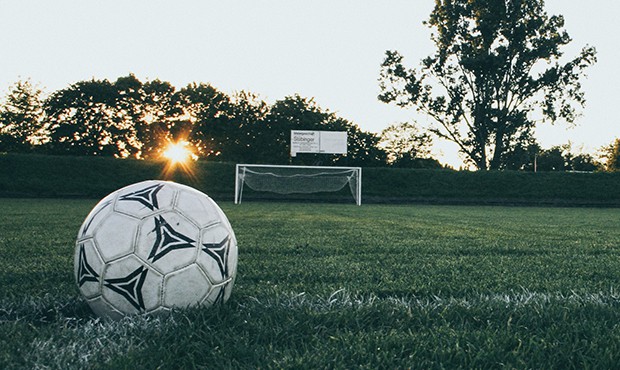Understanding the Benefits of High School Sports
 High school sports have become a big business as young athletes seek out opportunities to shine in front of college scouts. Some parents make enormous financial sacrifices to send their children to prestigious private schools with successful teams or request zone variances for their children to attend certain high schools which requires parents to provide transportation for their student athletes rather than relying on public school bus transportation, at least until they’re able to drive themselves. Here are six benefits of playing high school sports.
High school sports have become a big business as young athletes seek out opportunities to shine in front of college scouts. Some parents make enormous financial sacrifices to send their children to prestigious private schools with successful teams or request zone variances for their children to attend certain high schools which requires parents to provide transportation for their student athletes rather than relying on public school bus transportation, at least until they’re able to drive themselves. Here are six benefits of playing high school sports.
School Pride
According to Unigo, students who participate in high school sports reap the benefits of representing their communities on the court, the field, and the pitch. High schools have regional rivalries and student athletes get to represent their school in what are most likely, heated games. It’s fun and when their school wins, they celebrate a job well done representing their high school. This feeling of community and the honor of representing the home team will run over into college athletics since colleges have their own rivalries too.
The Three “P’s”
Education.com stresses the importance of “The Three P’s” with student athletes – Practice, Patience, and Persistence. Someone must be second or third string, your student athlete might not be the starting five, and repeating the same drills over and over again, whether you start or not, all require practice, patience, and persistence. “The Three P’s” are important life lessons and take a lifetime to perfect if perfection is even achievable.
Leadership Skills
Being a member of a high school team provides young athletes opportunities to lead. In most of America’s high schools, there are both junior varsity and varsity teams. When young student athletes move up from junior varsity to varsity, senior students are expected to mentor, encourage, and lead younger students, holding them accountable for their decisions. Senior students set an example for younger students, providing advice and guidance both on and off the field.
Academics
High school sports require students to maintain a minimum GPA to participate. This requires students to manage their time effectively, so they have time for practice, games or matches, homework, and studying. A study published in the Medicine & Science in Sports and Exercise found that students who were active in sports like soccer, football and even skateboarding performed 10 percent better in core subjects like math, science, social studies, and language arts. Since high school sports offer equal opportunity to all students in the high school population, these academic benefits extend to all high school athletes, including students who are traditionally underserved in their communities.
Other important statistics include:
- High school students who participate in sports are far less likely to drop out of school.
- High school sports have been shown to deliver consistently higher grades.
- Those who participate in high school sports are 15 percent more likely to attend college.
- Women from all socioeconomic backgrounds who played sports in high school were 73 percent more likely to earn a college degree within six years of graduating high school.
Successful Mindset
We Play Moms outlines the mindset for success that is instilled in student athletes, which includes:
- Creativity in finding ways to improve
- Time management
- Strong focus and concentration development
- Internal skills for handling pressure
- Learning when to take risks
- Taking responsibility for individual performance
 Greater Well-Being
Greater Well-Being
As we navigate the COVID-19 pandemic, we have come to understand the importance of well-being, especially for children. As parents, we knew getting our kids back on the court and the field was of unimaginable importance. The benefits of students playing youth sports screamed that much louder during the height of the pandemic.
- In a study published by Developmental Psychology, student athletes manifest stronger peer relationships, better attachment with adults, higher self-esteem, a closer sense of family, and participate more in volunteerism.
- In another study published by Developmental Psychology, we learned student athletes are less likely to engage in high-risk behavior; they have a greater sense of initiative, persistence, and personal responsibility.
- According to the Journal of the American Medical Association, a survey of over 14,000 teens found that those who participated in team sports were less likely to use drugs, smoke cigarettes and carry weapons.
Choosing between high school and club sports
It’s important for families to do their research when choosing between high school and club sports [You can learn more about the benefits of club sports here.] Talk to other families and lay out the pros and cons of club and high school sports and answer these questions:
- What are your goals as an athlete?
- What sport do you play?
- Can you play both club and high school sports?
As your family determines the pros and cons of club and high school sports, consider how Caris Sports Foundation is leveling the playing field to keep young athletes off the sidelines. You can learn more about our program, how it works, and how we can support your student athlete here.

We’re leveling the playing field.
Caris Sports Foundation
4980 S. Alma School Road A2-511
Chandler, Arizona 85248
Stay In The Know
"*" indicates required fields
© Copyright 2022 Privacy & Terms
Caris Sports Foundation is a 501(c)(3) non-profit. Donations are tax-deductible.

Leave a Reply